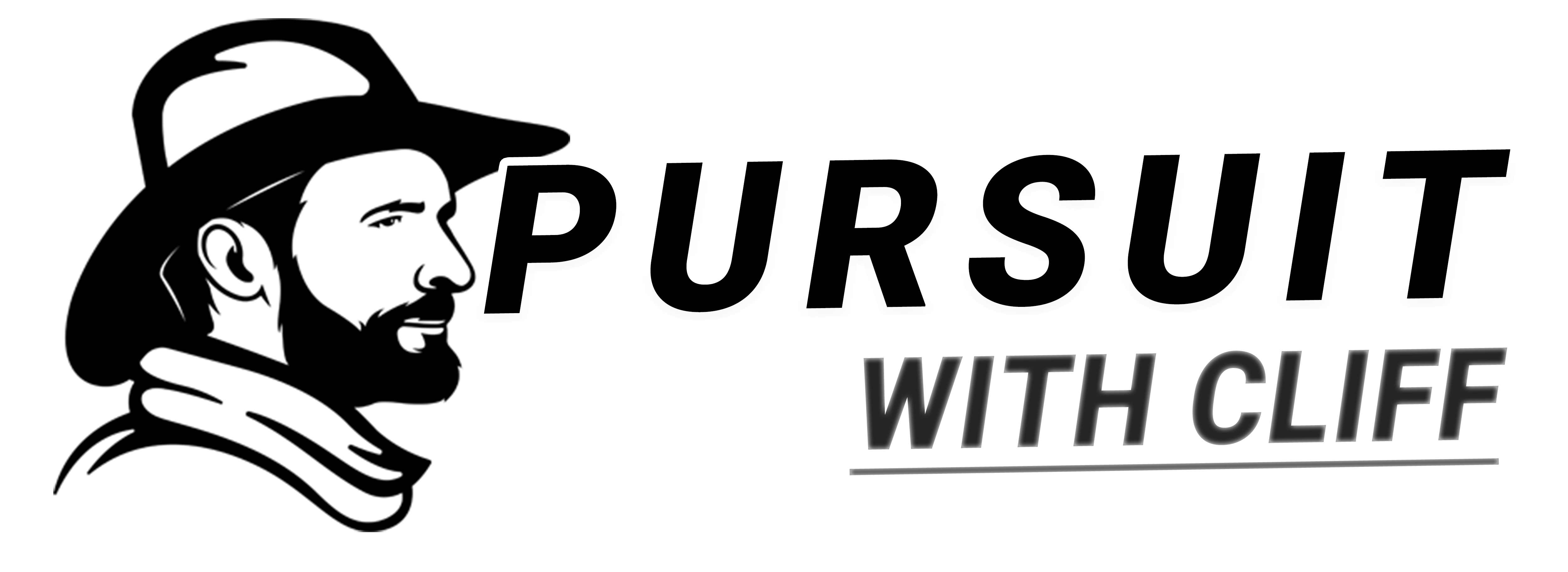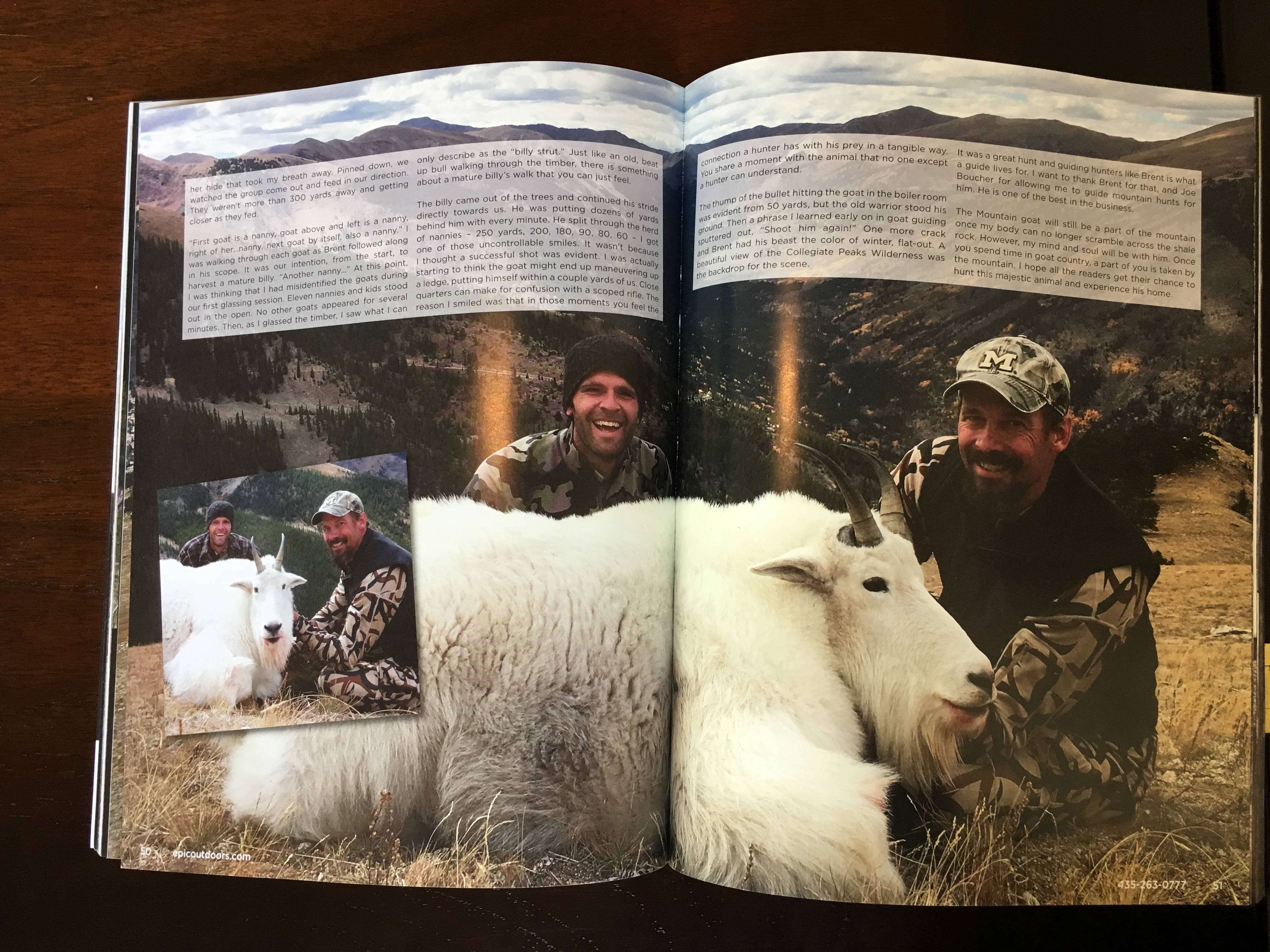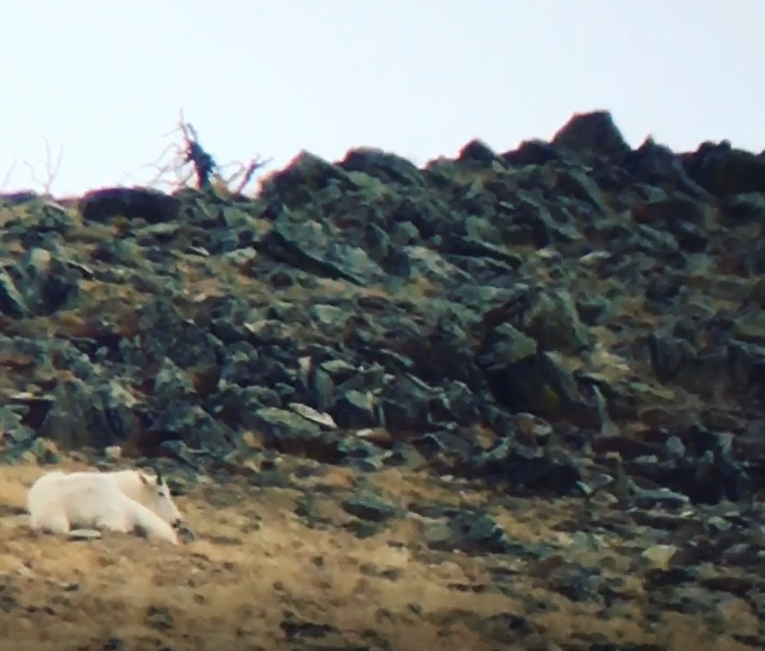This story was edited and published by Epic Outdoors in their Oct/Nov 2017 Issue.
One Last Billy
Guide: Cliff Gray
Hunter: Brent Fassett
It had been a hell of a September. Guiding goats hunts along the continental divide, running back to the Flat Tops to pack in elk hunters and chasing high country mulies had all kept me busy. Now, I was on my way to meet my last goat hunter. It would be great to finish up the early season with a bang and a hefty pack-out.
I was guiding for Joe Boucher of Horn Fork Guides in Colorado’s G2 unit. G2 is the land of 14k elevation peaks, altitude sickness, lightning bolts and the best views on planet earth. There are many pockets of goats, but there aren’t mature billies around every corner. I had tabs on three different billies through early scouting. My first hunter killed one of them, one of Horn Fork’s other guides killed another, and the third billy was giving me the slip. That is, until I was speeding into town to meet Brent.
As a guide, meeting your goat or sheep hunter for the first time is like arriving for a blind date. You hope for a good personality and positive attitude. You pray they aren’t fat. Brent was the super model of hunters: energetic, an accomplished mountain hunter, and in good shape. After introductions and quick chat, I told Brent about a goat I hadn’t seen for weeks but had just glassed up on my way into town. “Do you want to go back and take a look at him?” Brent came back, “That’s what I’m here for! Let’s go.” It was music to a guide’s ears.
I had located this third billy several times in an odd area for a goat. He had a rock pile he liked, well below tree line surrounded by slides thick with aspens. Despite his odd location, he had the prototypical mature billy personality of running solo, not a nanny or kid on his mountain. This afternoon I glassed up the goat again roughly ½ mile from his rock pile on the other side of the mountain. Now he was in more typical, above tree line goat habitat. The plan was Brent, myself, and my assistant guide Jimmy would put the sneak on him first thing in the morning.
The first morning of the hunt a tough ascent turned into a brutal one given an unexpected road closure by the Forest Service. Turns out they were doing some road work “between hunting seasons”. I guess goat season doesn’t count! We slowly climbed our way out of the valley, scaling roughly 1,800 vertical feet in less than three quarters of a mile. Up, up and more up.
There are two tricks to goat hunting that can kill your stalks while ascending. First, goats are wary of what is below them. Even an old billy in the Maroon Bells who has seen thousands of hikers will jump ship if curious folks start an ascent off trail to his position. Second, in the alpine it’s always windy and thermals play a big role. On a morning ascent, if improperly positioned, the flip of the thermal can push human stench to an old billy’s nostrils. This is what I wanted to avoid.
As we neared the goat’s home rock pile from below, the protection of the settling nighttime thermal was starting to fade. We got the glass out and started picking country apart. Nothing on the rocks. This was good news. Now we could take our time, quickly pass over a small saddle and find the goat on the opposite face. He would be right where we left him the night before. We would play the rising thermal by scaling the opposite side of the peak, have the drop on the billy, and be drinking hot cocoa by noon.
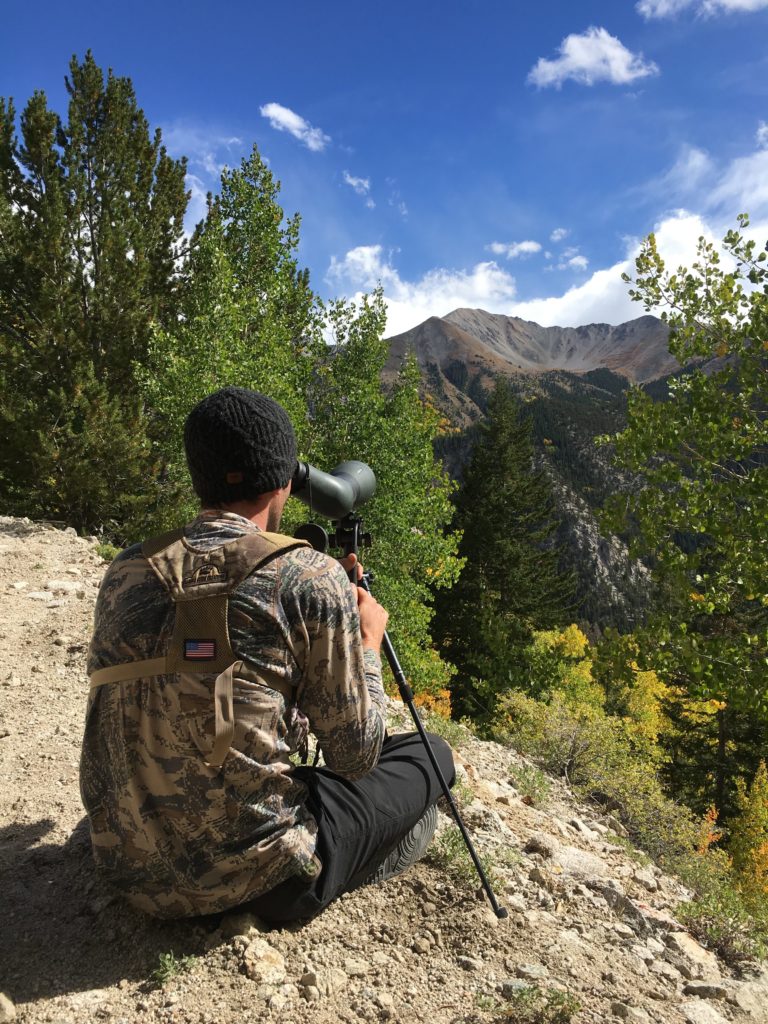 As we traversed the saddle, it struck me that we might have just been outdone by a white fluff ball. The geography of the saddle created a turmoil of wind that I hadn’t factored in. The wind made it nearly impossible to get into proper final ascent position. In addition, if the old billy was feeding by that saddle, he already had us. His droppings and blocky hoof prints signaled we were on one of his main thoroughfares. We side hilled the peak to the top, doing our best with the wind, only to find the billy’s warm bed, some white hair and a nice view.
As we traversed the saddle, it struck me that we might have just been outdone by a white fluff ball. The geography of the saddle created a turmoil of wind that I hadn’t factored in. The wind made it nearly impossible to get into proper final ascent position. In addition, if the old billy was feeding by that saddle, he already had us. His droppings and blocky hoof prints signaled we were on one of his main thoroughfares. We side hilled the peak to the top, doing our best with the wind, only to find the billy’s warm bed, some white hair and a nice view.
Tired and duped we headed down the hill. These are the moments when having a great hunter is key. It could have been a silent descent, but we all kept a sky-high attitude. With every foot of decline, we planned out our next attempt. We would lay off the area for a day and come back with some new tricks.
After lunch, Brent and I headed over to one of my favorite glassing spots on the other side of the unit. Within twenty minutes of glassing we had a group of 13 goats located roughly 1,600 yards away. The majority of the goats were nannies and kids, but Brent and I identified two billies. I didn’t recognize either billy from my scouting. Sometimes they just show up, and it wasn’t time to look a gift horse in the mouth. It was too late in the day to make a play on the goats, but we had our morning target. We enjoyed glassing the basins until dark. A medium sized ram and a heard of elk holding a nice bull showed up before we headed out.
The next morning we snuck up into the bowl before light. Right off the bat, Brent located our goats bedded right at the sky line. We were already at tree line, so we moved into a position to wait the goats out. The group finally made their way, single file, across the bowl to the trees. I had seen goats bed in that area before, so we started our long rocky climb around the basin in their footsteps. What took the goats 20 minutes, took us a couple hours.
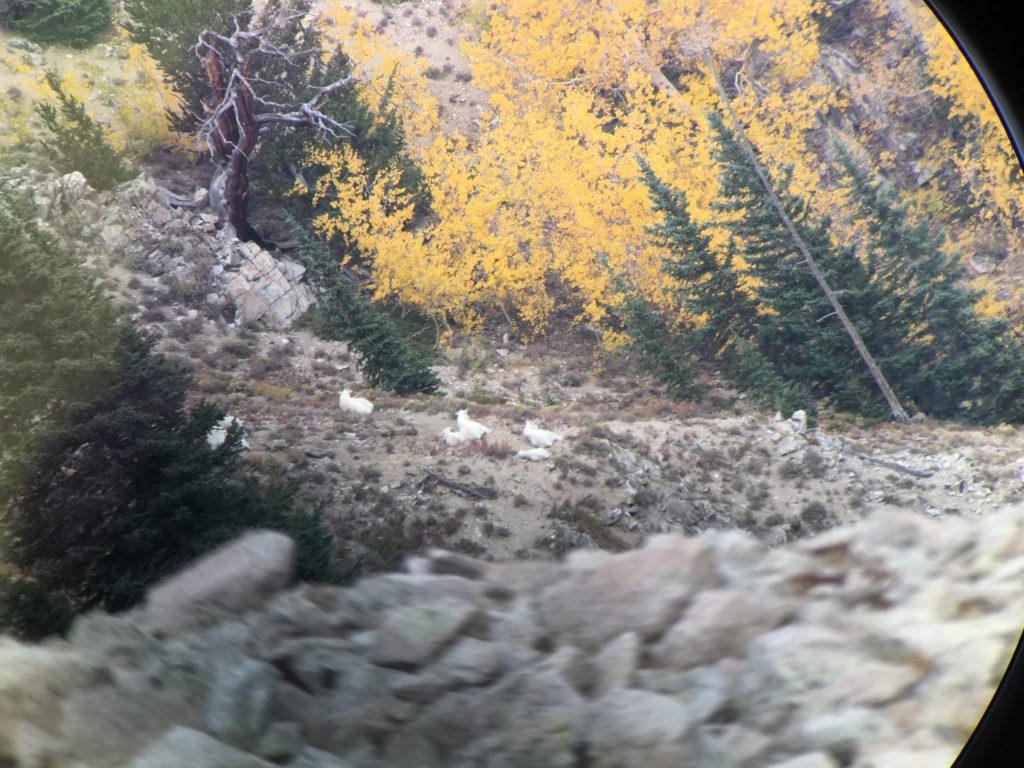 “Brent, there they are.” We slowly descended from above, a powerful thermal rushing in our faces. A beautiful nanny with nearly her full winter coat stepped out from the timber. The wind created a ripple across her hide that took my breath away. Pinned down, we watch the group come out and feed our direction. They weren’t more than 300 yards away and getting closer as they fed.
“Brent, there they are.” We slowly descended from above, a powerful thermal rushing in our faces. A beautiful nanny with nearly her full winter coat stepped out from the timber. The wind created a ripple across her hide that took my breath away. Pinned down, we watch the group come out and feed our direction. They weren’t more than 300 yards away and getting closer as they fed.
“First goat is a nanny, goat above and left is a nanny, right of her… nanny, next goat by itself, also a nanny.” I was walking through each goat as Brent followed along in his scope. It was our intention, from the start, to harvest a mature billy. “Another nanny…” At this point, I was thinking that I had misidentified the goats during our first glassing session. Eleven nannies and kids stood out in the open. No other goats appeared for several minutes. Then, as I glassed the timber, I saw what I can only describe as the “billy strut”. Just like an old beat up bull walking through the timber, there is something about a mature billy’s walk that you can just feel.
The billy came out of the trees and continued his stride directly towards us. He was putting dozens of yards behind him with every minute. He split through the herd of nannies. 250 yards, 200, 180, 90, 80, 60… I got one of those uncontrollable smiles. It wasn’t because I thought a successful shot was evident. I was actually starting to think the goat might end up maneuvering up a ledge, putting himself within a couple yards of us. Close quarters can make for confusion with a scoped rifle. The reason I smiled was because in those moments you feel the connection a hunter has with his prey in a tangible way. You share a moment with the animal that no one except a hunter can understand.
The thump of the bullet hitting the goat in the broiler room was evident from 50 yards, but the old warrior stood his ground. Then a phrase I learned early on in goat guiding sputtered out, “Shoot him again!” One more crack and Brent had his beast the color of winter, flat-out. A beautiful view of the Collegiate Peaks Wilderness back dropped the scene.
 It was a great hunt and guiding hunters like Brent is what a guide lives for. I want to thank Brent for that, and Joe Boucher for allowing me to guide mountain hunts for him. He is one of the best in the business.
It was a great hunt and guiding hunters like Brent is what a guide lives for. I want to thank Brent for that, and Joe Boucher for allowing me to guide mountain hunts for him. He is one of the best in the business.
The mountain goat will still be a part of the mountain once my body can no longer scramble across the shale rock. However, my mind and soul will be with him. Once you spend time in goat country, a part of you is taken by the mountain. I hope all the readers get their chance to hunt this majestic animal and experience his home.
Sign up to get our new posts as they are published!
